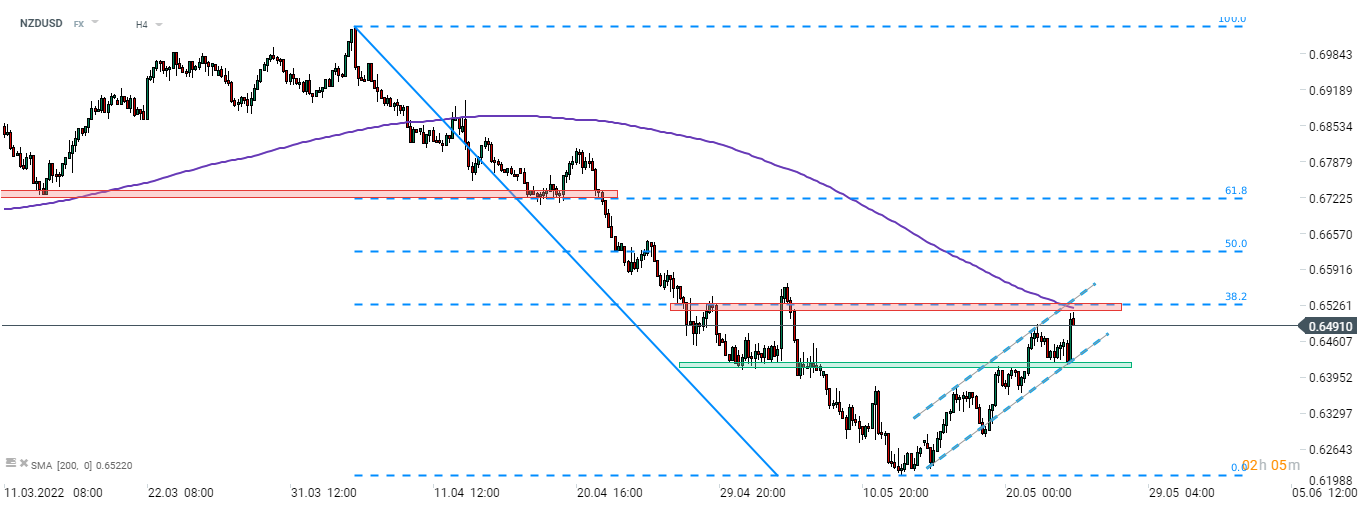New Zealand dollar is the best performing major currency today, following the RBNZ rate decision. Central bank delivered a second 50 basis point rate hike in a row, putting the official cash rate at 2.00%. Bank noted that all core measures of inflation exceed 3% and stays committed to bringing it down. Expected rate hike forecasts moved higher with RBNZ now expecting the official cash rate to be 2.68% in September 2022, 3.88% in 2023 and 3.95% in September 2023. RBNZ Governor Orr said during a press conference that he believes the current neutral rate is in 2-3% range but 'doing too much too fast on rates' is the least concern the Bank now has. Market now expects RBNZ to deliver another two 25 basis point rate hikes in July and August.
NZDUSD got a lift following the decision announcement and during the press conference. Pair jumped and traded above 0.6500 briefly but bulls failed to hold onto those gains. NZDUSD pulled back slightly but still remains close to the resistance zone marked with 38.2% retracement of recent correction, 200-period moving average (H4 interval) and the upper limit of an upward channel. Note that USD is likely to become more active this evening when FOMC minutes are released at 7:00 pm BST so another attempt of breaking above the aforementioned resistance may be made.
 Source: xStation5
Source: xStation5
Three Markets to Watch Next Week (12.12.2025)
Daily summary: SILVER at a new ATH, EURUSD at its highest since October
Turkey has decided to lower the weekly repo rate to 38%
Chart of the day: AUDUSD (11.12.2025)


